Specials Mentions
1st Prize - 2nd Prize - 3rd Prize - Honourable Mentions - Special Mentions - Finalist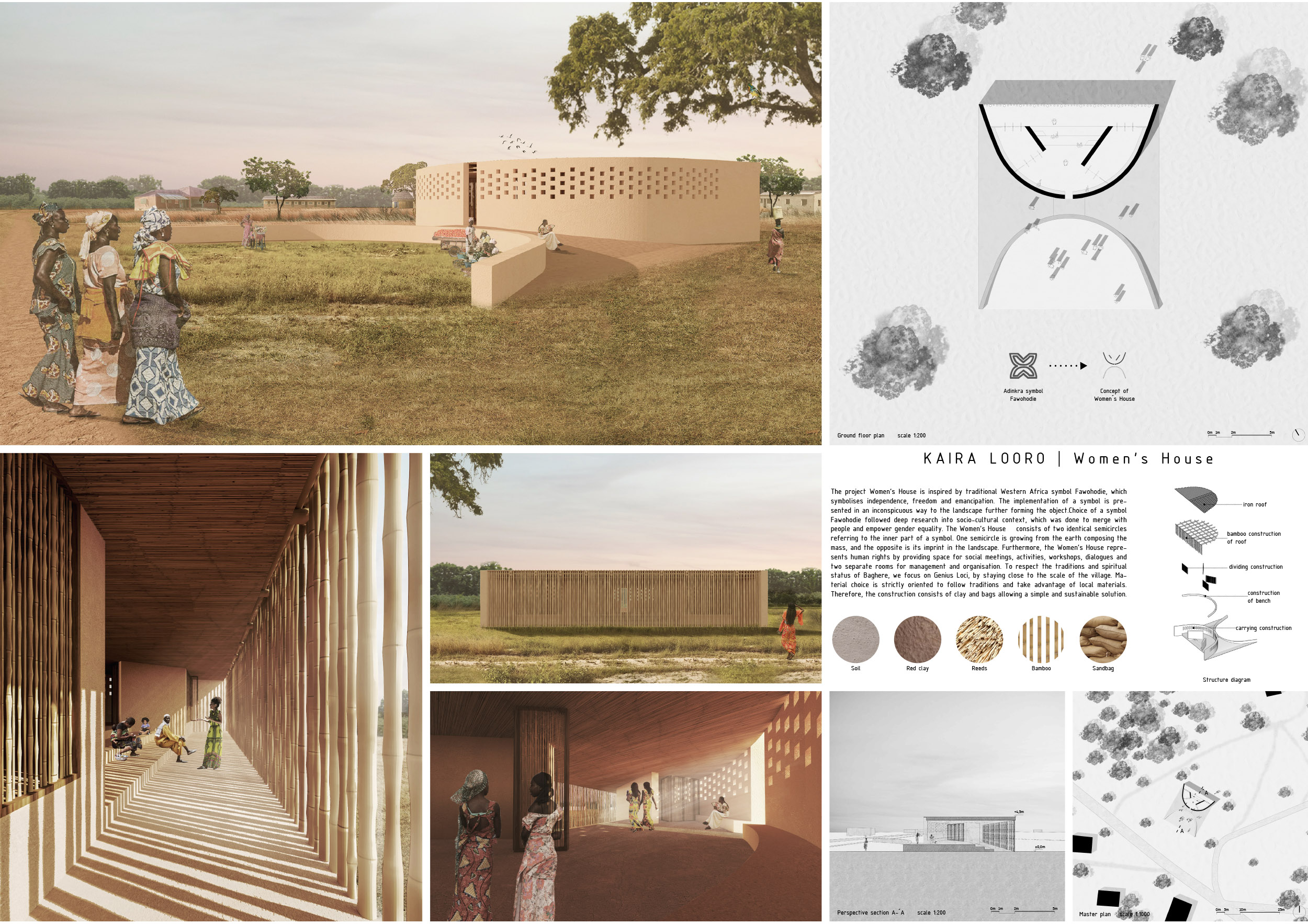 |
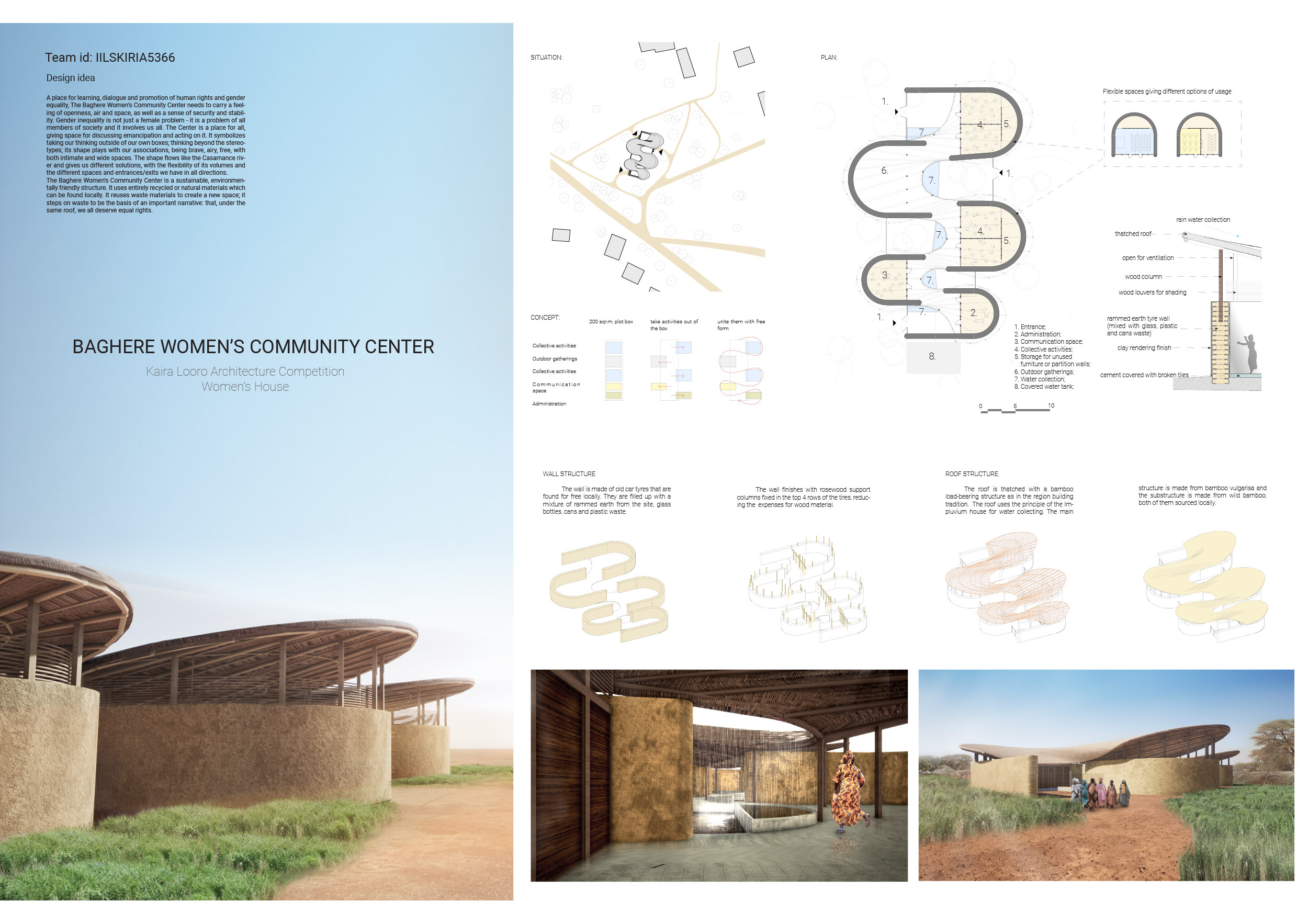 |
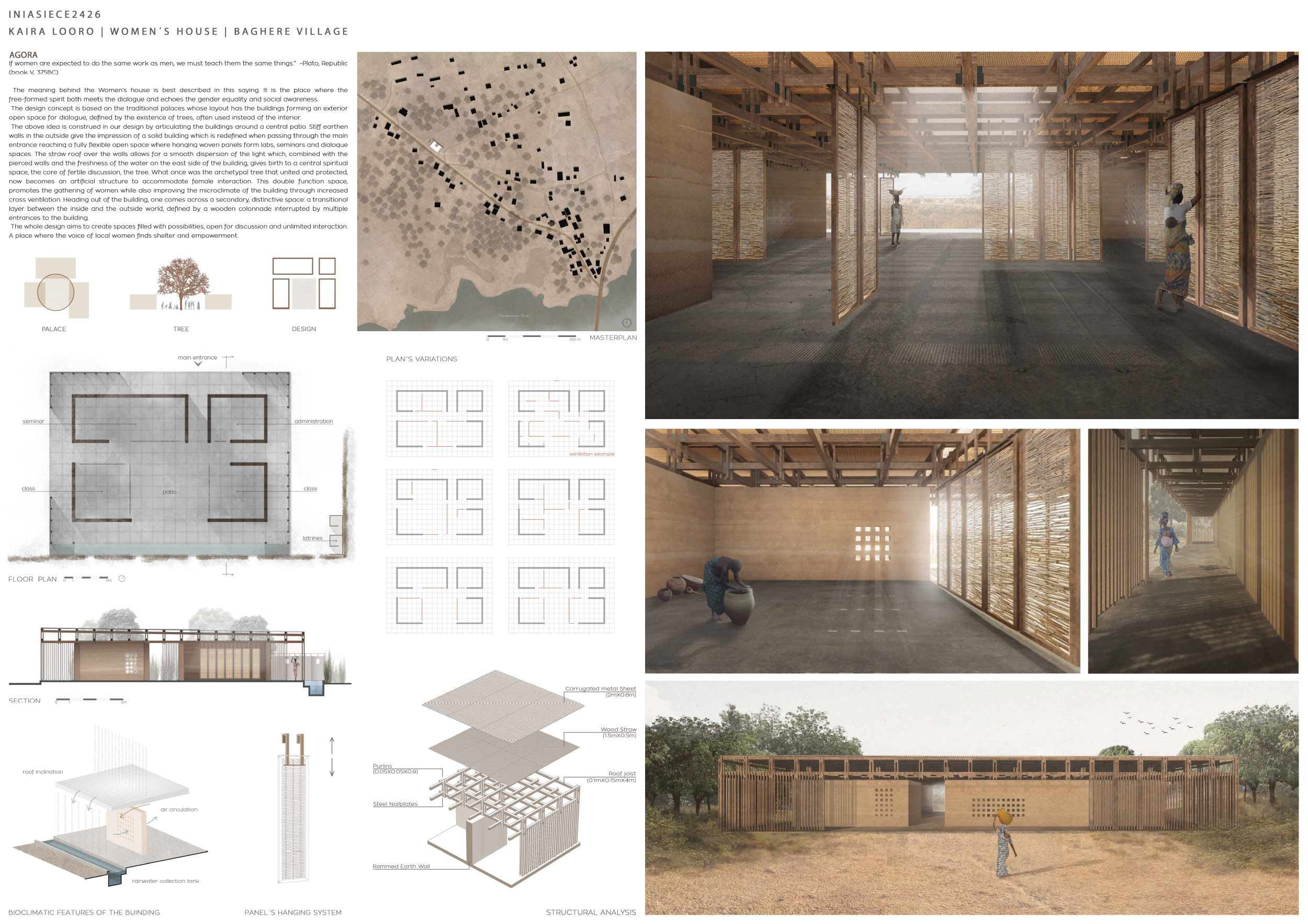 |
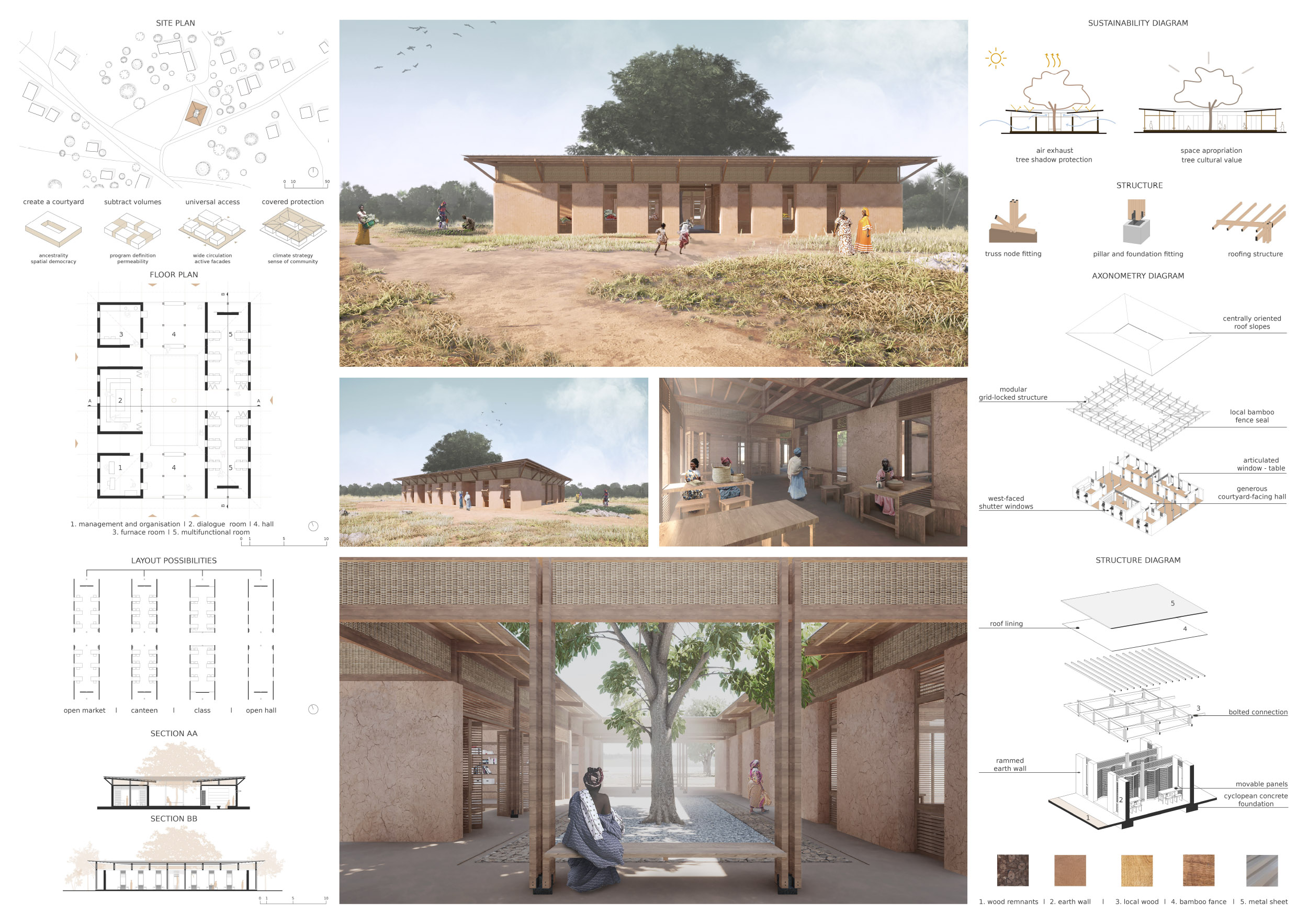 |
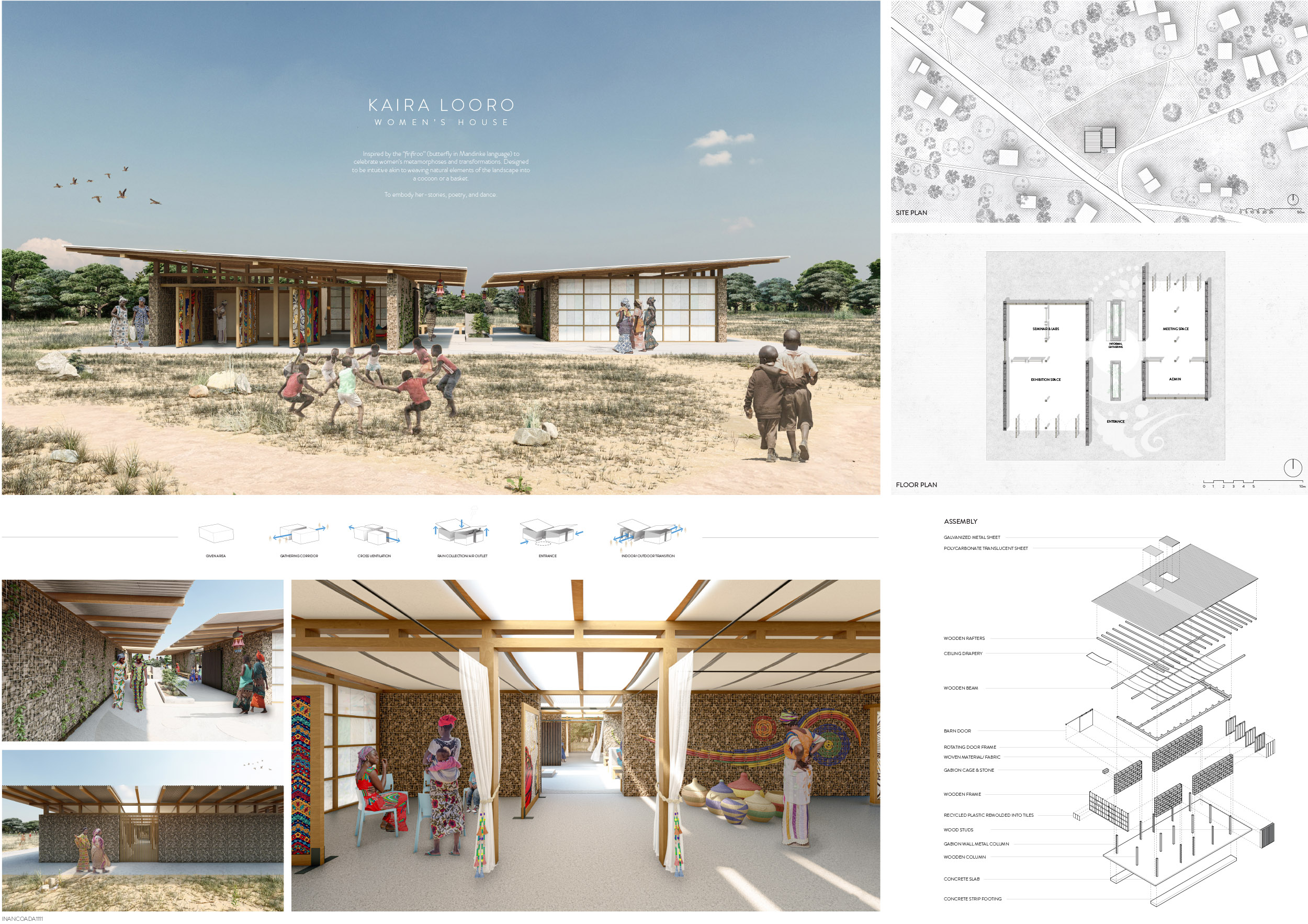 |
LINKOVKIA5555 |
IILSKIRIA5366 |
INIASIECE2429 |
IELUDASIL1006 |
INANCOADA1111 |
IELUDASIL1006
Project by: Daniel Arruda Weinstein Teixeira, Maria Isabela Neves Ferreira, Clara Maria Barbosa Teodoro, Mateus Leandro, SIlva Bruno de Albuquerque Ferreira Lima.from Brazil


Design idea
The harsh reality of gender inequality present in Senegal is palpable in the daily lives of women, who face a series of obstacles in participating in key sectors of society. Architecture plays a crucial role in opening a new world of opportunities for women, capable of conceiving spaces that foster social, economic, and political inclusion and participation for this group. Therefore, our intention for this project is to create a versatile architecture, suitable to supply diverse collective activities that strengthen the meetings, dialogues, learning, collective memory and initiatives already existing in the village, and furthermore create an environment where women feel safe and empowered. We tried to locate the building in a unique way, taking as a starting point a tree isolated from the surrounding vegetal mass, organizing, around this symbol of resistance, protection and hope, a courtyard building. The surroundings have an abundant vegetal mass and with pre-existing paths that surround the building as a whole, setting a project whose meeting and dialogue are part of its location. The women's house was developed under the same roof, but in 4 different volumes that are allocated in a structural grid of 2.5m x 2.5m. This system allows to generate a spatial configuration as free and versatile as possible, such as the presence of a multifunctional room with side walls formed by an alternation of mobile panels. With a 90º movement, the mobile panels can be transformed into tables, making it possible to create several possibilities of space at the same time in a single environment, being able to be configured as a classroom for the training and qualification of women, an auditorium for the organization of assemblies, a free market for commercialization or a community meeting place and cultural events. This initiative is able to empower women from technical training to income production, from land and agricultural-commercial activity, building a self-sufficient and inclusive community network. In addition, the windows, when arranged as a table, create a large opening to the outside, allowing the entry of diffused natural lighting, the renewal of the air and a continuous dialogue with the existing nature and the surroundings. The building also has an environment with a wood oven, aimed at the production of artifacts in clay and ceramics for sale, as well as encompassing the configuration of community kitchen, slowing down the social reproduction works that, in general, are assigned to women. Allied to this, the project foresees a meeting room, permeated by niches in its walls, becoming, also, a place for exhibition and sale of products produced in the building itself. Finally, the building has an environment of co-management and organization, enabling its operation in a community and democratic way. The organization of the building's environments, in the shape of a courtyard and with the sloping roof towards the interior of the building, allows the hot air to escape from above and the fresh air to spread through the living spaces, serving as a great exhaustion. The building has the presence of shutters in the frames and the bamboo fence as lining on the roof in order to provide milder temperatures inside the environments and adapt to the local climate. As it is a self-construction project and understands community participation as a factor of social and political engagement, the building's execution process includes training workshops, mainly aimed at women. The project, then, is in fact a dynamic and collaborative space, capable of meeting and strengthening the multiple demands and initiatives of a universe of germination and resonating with optimism.IILSKIRIA5366
Project by: Daniil Komitski, Mila Lyutskanova.from Bulgaria


Design idea
Our team approached the given topic of the contest with solid research on the problem of women's rights in different parts of the world and, of course, Senegal. During this process, a question started to emerge: how do we juxtapose, on one hand, the notion of tradition and, on the other, of human rights? A problem well-known to anthropologists, we started our architectural journey from there. How can they live together? Traditions are the basis of our cultural context and they form our universes, building them and arranging them. Unfortunately, many times traditions define some people as inferior and some inhuman or dangerous practices as necessary and unquestionable. Some traditional ways of perceiving the other collide with the notions of equality: of equal start, access and rights. This "opposition" or, better said, the necessity of creating dialogue became the basis of our concept. Dialogue for us means: finding a way. In the current context: creating a space to be together, eliminating oppression, misunderstanding, stereotypes. A space where all members of the local communities will be welcome. Created with the aim of promoting the values of gender equality, our Women's House takes its program outside of the box. Instead of being ready-made, it symbolizes thinking beyond the stereotypes, since gender stereotypes are in the very center of inequality. The Baghere Women’s Community Center is a collection of five different volumes, arranged around a courtyard and united by a single roof. The volumes and the yard interact with one another, creating different segments in the latter. The roof unites all volumes, demonstrating unity and community. The inside of the House feels like a common space that gives the visitors the opportunity to choose where they want to be positioned; yet, every volume is independent and provides privacy so that separate activities can be hosted simultaneously. Inside the collective activities spaces there are partition walls that allow the rooms to be flexible and to be rearranged according to the current needs of the activity. Three separated entrees give the visitors from other villages equal access to the building. The curves of the walls connect all volumes in one flow. The curve - with its soft shape and endless flow - allows a feeling of freedom within the visitors. We wanted to create a space where a person feels individual yet a part of a group; a space that gives many opportunities, that is not straight and rectilinear, but provides alternatives, opportunities, freedom of movement. After all, this building would be a home to activities that promote free will, the right to make your own decisions, open dialogue, freedom of expression, awareness rising. The structure of the House looks like a tunnel, but instead of having two open ends it has many entrances and exits and it flows like a river with spaces to access in all directions. The Baghere Women’s Community Center is located in a place highly affected by the weather conditions, especially the periods of floods and dryness. Therefore, the main axis of the building follows the slope of the terrain in order to divert the floods. Within the roof structure the traditional for the Casamance region impluvium is used, so that water can be collected during the rainy season. The House doesn't need any heavy machinery to be constructed and is easily built, allowing the local community to take active part in the building process. It is a sustainable, environmentally friendly structure, using entirely recycled or natural materials. It integrates itself in the local context and is friendly to the local traditions, respecting them and using local materials and architectural practices. At the same time it carries its individuality. It brings together the respect for the local tradition, culture and environment, and its function of promoting fundamental human rights; thus, it symbolizes an important narrative: that, after all, existing under the same roof, we all deserve equal rights.INANCOADA1111
Project by: Trina Listanco, Lealyn San Juan, Lilian Wangfrom Canada


Design idea
The proposed design is inspired by the “firifiroo” (butterfly in Mandinke language) to celebrate women’s metamorphoses and transformations. Our architecture literally and metaphorically weaves together the essentials of earth, flora and fauna, rain, the prevailing winds, and the diverse women’s stories of Baghere Village in the Casamance region of Senegal. Similar to butterflies emerging from woven cocoons, the “Women’s House” harks the promise and vision of empowered women coming together and taking flight! The construction progression is catered for the local women, and designed to be very intuitive, akin to weaving the natural elements of the landscape into a cocoon or a basket: a) interlacing reinforcement for the ground work b) embedding shells to enrich and write poetry on the floors c) weaving rocks through gabion-building techniques d) stringing beads, fibers, fabric, and plants into wooden or metal mesh walls e) telling stories through art embroidered and interlaced within the walls or the roof. Recycled and repurposed fabric and plastic wastes were included in the design to ensure that the building has a positive environmental footprint and message. We chose light materials for ease of onsite construction and maintenance such that there is no material heavier than 25kgs/ unit. And by integrating plants into our walls and spaces, we are bringing biophilic principles that will encourage the biodiversity of local birds, host a wall garden of medicinal plants, harvest of rain water, and support a living gallery for the community. The 200 sqm interconnected building can be approached from multiple directions as it has two (2) “wings” that allow for morphing into various uses such as a discussion space, a festive venue, an exhibition gallery, or a place for communing with other women. The central “body” or courtyard links the two wings while presenting an adaptable living place for rain collection, medicinal gardening, or a place for pause or a place for conversation. A wind tunnel (wooden slots) is designed to transect and aerate this central atrium/ courtyard. Thus, the anatomy and the construction process of our design literally brings to life the “firifiroo”, with roof to collect rain, with flowing and ventilated indoor / outdoor spaces, with versatile interiors, with living protective walls, and with various surfaces that invite imagination and expression to inspire women to continually create and own their art each step of the way. As women architects and placemakers, our team is using architecture and the construction processes as the “means” or “therapy” to empower women, to strengthen social bonds, create new rituals, to showcase traditional skills and talents, and to provide a runway for a positive innovative experience and economy. Through architecture, the “Women’s House” becomes a real embodiment of women “her-stories”, wisdom, poetry, crafts, and dance. The “Women’s House” exemplifies womanhood herself: she who soars, she who provides benevolent care and she who nurtures.INIASIECE2429
Project by: AIKATERINI POULIASI, ALIKI KONSTANTINIDOU, AIMILIA MARIA SOKRI.from Greece


Design idea
The meaning behind the Women"s house is best described in this saying. It is the place where the free-formed spirit both meets the dialogue and echoes the gender equality and social awareness. The design concept is based on the traditional palaces whose layout has the buildings forming an exterior open space for dialogue, defined by the existence of trees, often used instead of the interior. The above idea is construed in our design by articulating the buildings around a central patio. Stiff earthen walls in the outside give the impression of a solid building which is redefined when passing through the main entrance reaching a fully flexible open space where hanging woven panels form labs, seminars and dialogue spaces. The straw roof over the walls allows for a smooth dispersion of the light which, combined with the pierced walls and the freshness of the water on the east side of the building, gives birth to a central spiritual space, the core of fertile discussion, the tree. What once was the archetypal tree that united and protected, now becomes an artificial structure to accommodate female interaction. This double function space, promotes the gathering of women while also improving the microclimate of the building through increased cross ventilation. Heading out of the building, one comes across a secondary, distinctive space: a transitional layer between the inside and the outside world, defined by a wooden colonnade interrupted by multiple entrances to the building. The whole design aims to create spaces filled with possibilities, open for discussion and unlimited interaction. A place where the voice of local women finds shelter and empowerment.LINKOVKIA5555
Project by: Kalin Cakov, Metodiy Monev, Jan Obusek, Zuzana Potocna, Sophia Cakova.from Slovakia

